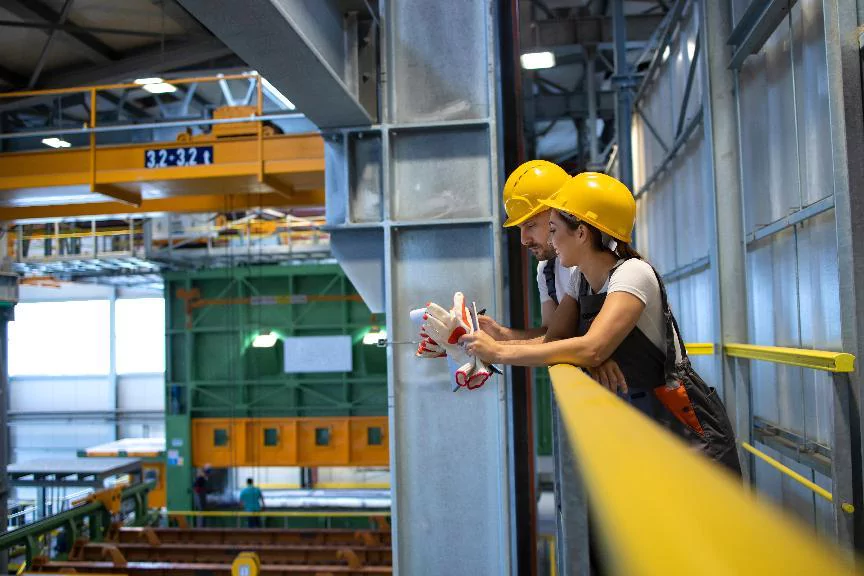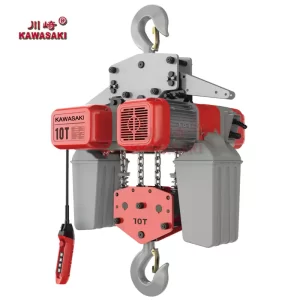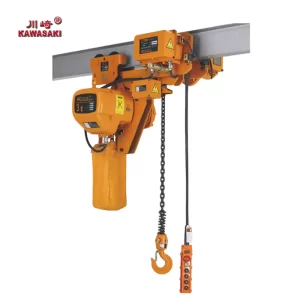Introduction
Electric chain hoists are indispensable tools in material handling, used across a wide range of industries such as manufacturing, construction, warehousing, mining, and shipbuilding. Among the key factors that affect the performance and suitability of an electric chain hoist is the type of electrical supply it uses: single-phase or three-phase power. This seemingly technical distinction has deep implications for operational reliability, deployment feasibility, cost efficiency, and regional adaptability.
Understanding the nuances between single-phase and three-phase electric hoists is essential not only for equipment engineers and purchasing managers but also for planners concerned with the infrastructure and energy demands of diverse industrial operations across different geographic regions.
1. Basic Differences: Single-Phase vs. Three-Phase Power
Single-Phase Power
-
Utilizes two wires: one live and one neutral.
-
Commonly available in residential and light commercial areas.
-
Usually rated at 110V–240V.
-
Suitable for smaller loads and lighter-duty tasks.
Three-Phase Power
-
Uses three alternating currents at different phases.
-
Provides a continuous power flow with less pulsation.
-
Common in industrial and heavy-duty settings.
-
Typically rated at 380V–480V.
-
More efficient for running large motors and lifting heavy loads.
2. Operational Reliability
a. Power Stability and Load Handling
Three-phase electric hoists offer more stable power and torque distribution compared to single-phase models. This results in:
-
Smoother lifting operations
-
Less motor overheating
-
Higher duty cycles
In contrast, single-phase hoists may experience voltage drops, frequent motor heating, or limited lifting duration, especially under heavy loads or continuous operation.
b. Motor Longevity
Three-phase motors generally:
-
Run cooler
-
Suffer less wear
-
Offer greater energy efficiency
As a result, they last longer and require less maintenance, making them more reliable for industrial-scale applications.
3. Deployment in Industrial Contexts
a. Manufacturing Plants and Warehouses
In heavy industrial settings like automotive factories or logistics warehouses, three-phase hoists are almost always preferred due to:
-
Higher lifting capacities (up to 10 tons or more)
-
Faster lifting speeds
-
Compatibility with the facility’s existing three-phase infrastructure
Single-phase hoists would not be reliable or efficient for such demanding operations.
b. Light-Duty and Mobile Operations
Single-phase hoists shine in small workshops, farms, or construction sites without access to three-phase power. For instance:
-
A small garage with limited wiring can still run a single-phase hoist for lifting engines.
-
Temporary or mobile job sites can use portable generators to power single-phase hoists.
Here, ease of installation and flexibility outweigh high power demands.
4. Geographical Considerations
a. Urban vs. Rural Access
In developed urban regions, three-phase power is widely accessible in industrial zones. Thus:
-
Users have the freedom to deploy high-capacity hoists.
-
Power infrastructure supports consistent voltage and frequency.
However, in rural or remote areas, especially in developing countries:
-
Three-phase power may not be available at all.
-
Single-phase systems are the default, especially for off-grid operations.
In such settings, the lack of infrastructure limits the choice to single-phase hoists unless expensive upgrades or converters are installed.
b. Regional Electrical Standards
-
North America: 110V/220V for single-phase, 208V/480V for three-phase
-
Europe & Asia: 220V–240V for single-phase, 380V–415V for three-phase
These regional differences affect:
-
Product selection
-
Motor design
-
Voltage compatibility
Manufacturers often produce dual-voltage or region-specific models to meet localized demand.
5. Cost Considerations
a. Initial Equipment and Installation
-
Single-phase hoists are generally cheaper and simpler to install, especially in non-industrial settings.
-
Three-phase hoists require compatible infrastructure, which may include higher-cost electrical installations or transformers.
b. Long-Term Operating Costs
Despite the higher initial investment, three-phase hoists:
-
Consume less energy per unit of work.
-
Have fewer motor failures.
-
Reduce downtime.
Thus, they offer lower lifetime costs in high-usage scenarios.
6. Flexibility and Portability
Single-Phase Advantages
-
More portable
-
Ideal for rental equipment and temporary jobs
-
Operable via standard power outlets or generators
This makes single-phase hoists valuable for:
-
Field service trucks
-
Remote construction jobs
-
Farm equipment repair
Three-Phase Limitations
-
Heavier and more complex wiring
-
Requires fixed infrastructure
-
Less portable and harder to adapt on short notice
7. Safety and Performance Implications
Overheating and Overload
Single-phase motors are more prone to:
-
Overheating under load
-
Voltage fluctuations
-
Motor stalling
This can result in:
-
Shorter motor lifespan
-
Increased fire risk
-
Interrupted workflows
Three-phase motors provide:
-
More consistent torque
-
Lower risk of electrical failures
-
Better overload protection mechanisms
Thus, safety is generally enhanced in three-phase systems.
8. Technological Adaptations
With the advent of Variable Frequency Drives (VFDs) and Phase Converters, it’s now possible to:
-
Run three-phase hoists on single-phase power
-
Adjust speed and torque electronically
However, such setups:
-
Add cost and complexity
-
May not be as efficient or reliable as native three-phase systems
This technology serves as a bridge solution, not a substitute.
9. Environmental and Energy Efficiency
Three-phase systems are inherently:
-
More energy-efficient
-
Less prone to energy loss
-
Better suited to high-duty cycles
In an era of increasing sustainability goals, the energy profile of lifting equipment becomes a critical consideration. Organizations aiming for ISO 50001 certification or reduced carbon footprints often favor three-phase hoists for their superior efficiency.
10. Decision-Making Matrix
| Factor | Best for Single-Phase Hoist | Best for Three-Phase Hoist |
|---|---|---|
| Power Availability | Residential or remote areas | Industrial zones or large-scale operations |
| Load Capacity | ≤1 ton (light to moderate) | ≥1 ton (moderate to heavy) |
| Frequency of Use | Occasional or intermittent | Continuous or intensive use |
| Budget | Lower upfront cost | Lower operating/maintenance cost |
| Portability | Mobile, flexible setups | Fixed installations |
| Energy Efficiency | Less efficient, higher energy loss | Highly efficient, lower loss |
| Operator Safety | Basic protection | Advanced motor protections |
Conclusion
The choice between a single-phase and a three-phase electric chain hoist is not merely a technical distinction—it reflects broader considerations of infrastructure, safety, cost, environmental responsibility, and application context. In developed industrial areas with ready access to three-phase power, the superior reliability, efficiency, and power of three-phase hoists make them the natural choice. However, in smaller workshops, remote sites, or areas with limited electrical infrastructure, single-phase hoists offer a practical and adaptable solution.
Ultimately, choosing the right hoist requires aligning technical specifications with operational goals, local conditions, and long-term cost considerations. As technology evolves and infrastructure expands globally, the line between the two options may blur—but understanding their current distinctions remains essential for sound engineering and procurement decisions.




